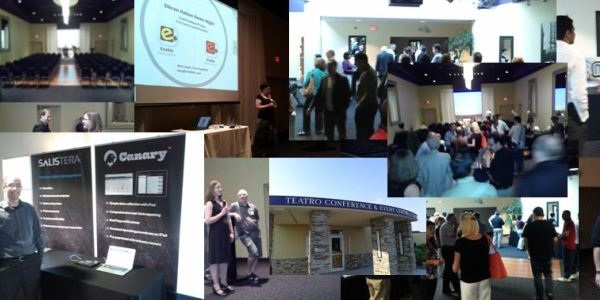by Reema Duggal | Mar 16, 2013
May 1, 2013
Silicon Halton: Building Hi-Tech Halton [Oakville News]
March 14, 2013
A glimpse into high-tech Halton. [Burlington Post]
February 1, 2013
Silicon Halton: Enabling the Creative Campus [Snap Milton]
January 3, 2013
TobogganHills: Tobogganing Tips From the King of the Hill. [The Globe and Mail]
October 2, 2012
Tabillo: Ontario Startup Tabillo Takes a Bite out of the Big Apple with Government-sponsored Accelerator Program. [Yahoo Finance]
March 10, 2012
yapAgame: yapAgame Kicks Off New Mobile App for Sports Fans World Wide at SXSW [DailyDealMedia]
March 9, 2012
yapAgame: YapAgame Releases New Mobile Social App for SXSW [Business 2 Community]
March 7, 2012
Javelin Technologies: Open House during Engineering Month [City TV]
Javelin Technologies: Giving the boot to traditional performance reviews [Globe and Mail]
Feb 27, 2012
Silicon Halton: How to run a successful online community [Backbone Magazine]
Dec, 2011
Silicon Halton: Fostering Innovation Through Professional Networking [Milton Economic Development]
Silicon Halton: Economic Development, Annual Report 2011 (see page 18) [Oaville Economic Development]
May 9, 2011
Silicon Halton: Making Halton the Next Silicon Valley [Toronto Star]
April 8, 2011
Silicon Halton: Facing venture capitalists without nasty dragon burns [InsideHalton.com]
April 29, 2010
Silicon Halton: Silicon Halton to be Hi Tech leader [Oakville.com]
News Releases
Official News Releases for our community members and Silicon Halton.
Nov 11, 2013
Virtual Logistics & Maps BI: Virtual Logistics Inc. and Maps BI Launch eCommerce Metrics Dashboard Packs for the eCommerce Retailer [PR Newswire]
January 31, 2013
Tabillo: Tabillo Presenting at the OLA – Super Conference, January 31st [Release]
December 3, 2012
Inovex: CAMH selects Inovex Healthcare Survey Management Platform [Release]
April 30, 2012
Silicon Halton and Golden Horseshoe Venture Forum to offer Mentorship Clinics for Halton Based Companies [Release | Registration]
March 9, 2012
Vana Workforce:Vana Workforce Announces Explosive Customer GrowthMomentum [Release]
October 5, 2011
Silicon Halton and Golden Horseshoe Venture Forum Form Community Alliance [Release]

by Reema Duggal | Jan 16, 2013
Just wondering! How many members of Silicon Halton claim SR&ED tax credits? Or, are aware of the SR&ED program, or know what SR&ED is or who is CRA?
For those not aware, SR&ED stands for Scientific Research and Experimental Development – it is an incentive program administered by the Canada Revenue Agency (CRA) since the mid-1980 for Canadian companies who perform research and development within Canada. It is designed to encourage the development and advancement of Canadian technologies. The program offers tax incentives in the form of refundable and non-refundable tax credits ranging from 20% to 35% on qualified expenditures. The SR&ED program provides nearly $3 billion in credits to over 24,000 claimants each year. And, yet an estimated $3 billion goes unclaimed! This is because many of the small and medium sized companies are not aware of the program, or do not think that their activities qualify for R&D funding, or just do not know how to go about it. The refund is available regardless of whether you have paid any taxes.
What Is Your Fair share Of These Tax Credits?
Needless to say, particularly in unsettled times of today, every business needs to explore all potential sources of revenue – particularly credits that go directly to the bottom line.
Are You Claiming SR&ED Tax Credits?
Canadian information technology firms are major beneficiaries of SR&ED benefits. Their claims represent 40 percent of the total claims. The government of Canada recognizes this and wants to reward you and other Canadian organizations that are constantly striving to develop new products and improve their processes.
Two components of the claim submission are: technical and financial. The technological assertion is more critical and challenging to deal with than the financial assertion. The key to success in this program is to have engineers and scientists do the technical write-ups. The documentation process is complex, but correctly documented efforts provide a critical source of funding for many.
For more information, go to www.cra-arc.gc.ca/txcrdt/sred-rsde/bts-eng.html or contact Raj Phalpher at rphalpher@resultel.com
 Raj Phalpher, P.Eng, CMC, is the Chief Results Officer of Resultel Technologies Inc. Raj’s focus is exclusively on SR&ED tax credits since 2002. Previously he provided training, counseling, and support to some of the world’s largest and most prestigious organizations in both the public and private sectors. Raj founded and chaired Emeritus of Toronto SPIN (Software Process Improvement Network) and is the Past-President of CIPS Toronto Chapter [2005]. Raj currently serves on several boards: GTA Chapter Board of the Canadian Association of Management Consultants [CAMC], Rotary Club of Oakville Trafalgar, Oakville Senior Citizens Residence and Shared Services International in addition to owning the Networking track of Silicon Halton monthly meetups. [Email] [LinkedIn] [Web]
Raj Phalpher, P.Eng, CMC, is the Chief Results Officer of Resultel Technologies Inc. Raj’s focus is exclusively on SR&ED tax credits since 2002. Previously he provided training, counseling, and support to some of the world’s largest and most prestigious organizations in both the public and private sectors. Raj founded and chaired Emeritus of Toronto SPIN (Software Process Improvement Network) and is the Past-President of CIPS Toronto Chapter [2005]. Raj currently serves on several boards: GTA Chapter Board of the Canadian Association of Management Consultants [CAMC], Rotary Club of Oakville Trafalgar, Oakville Senior Citizens Residence and Shared Services International in addition to owning the Networking track of Silicon Halton monthly meetups. [Email] [LinkedIn] [Web]

by Reema Duggal | Jan 15, 2013
Back in 1964, Bob Dylan sang “The times they are a-changin'” and that’s exactly what’s happening for CIOs as we look ahead to 2013. Everyone is looking ahead to next year and beyond as the changes that are already happening work their way into both large and small enterprises. If we are to believe Gartner, then one of the biggest changes will be the need for CIOs to emerge from their IT silos and work in harmony with CEOs and COOs to help companies balance the rapid technological shifts with the need to meet business and strategic goals in a still-uncertain economic market.
Cloud and Convergence
 Those technological shifts are a big part of the general uncertainty, with Gartner predicting big shifts in the IT services market as cloud, big data, social and mobile services start to come together. CIOs can expect to spend a lot of time on sourcing vendors with staying power in the year to come as mergers and acquisitions will take some of the biggest players out of the game. Meanwhile, those providing low-cost cloud services will rise. That could make it a good year for CIOs to shift their enterprises to the cloud but make sure that these providers also support mobile, social and big data, if that’s what you need.
Those technological shifts are a big part of the general uncertainty, with Gartner predicting big shifts in the IT services market as cloud, big data, social and mobile services start to come together. CIOs can expect to spend a lot of time on sourcing vendors with staying power in the year to come as mergers and acquisitions will take some of the biggest players out of the game. Meanwhile, those providing low-cost cloud services will rise. That could make it a good year for CIOs to shift their enterprises to the cloud but make sure that these providers also support mobile, social and big data, if that’s what you need.
Policies and Security
The shift towards cloud and mobile technology will bring other headaches for IT departments, who should prepare to support an increasing range of mobile devices. Resisting the trend will be career suicide. That means those who haven’t already started to put policies in place to deal with this should do so soon, as Gartner’s prediction suggests that having a bring your own device (BYOD) policy will be a must. Even if your enterprise decides to go the corporately owned personally responsible (COPE) this new openness will bring increased responsibilities for IT leaders. As Gartner points out, IT security professionals will need to be alert for warnings of new malware, viruses and security threats to maintain the integrity of company data. And CIOs will need to make sure that every employee is educated about device security, passwords and handling malware.
The Social Explosion
We have already seen the explosion of social. Recent research from Pew Research Center shows that 60 percent of Americans use social media sites. The numbers are similar for Canadians. With much of the key customer base online, there are changes ahead for how businesses operate and CIOs are in the frontline. The Gartner research shows a time when 40 percent of company contact information will be on Facebook which raises both the security issue and the issue of managing social media interactions. CIOs will need to take an active role in crafting social media policies that meet the needs of a range of users.
Big Data Analysis
They will also need to help companies harvest the increasing quantities of social data. Integrating business an analytics systems will become a key part of the CIOs role and CIOs will find themselves working more collaboratively across the company to provide and analyze actionable business intelligence. IT will no longer be a silo, but a function that crosses and enhances all business sectors. The result? New hires in IT won’t just have to know about servers and networking, but will need a range of business, analytical and soft skills. In particular, IT professionals should start planning now for the big data explosion. With predictions of 4.4 million jobs worldwide by 2014, this is a growth area.
Social Enterprises
Harnessing social won’t just be about looking outward to what customers are doing and managing your reputation, it will also be about integrating those technologies into the way the company operates. CIOs will have to create, source and support enterprise social tools. The trend is to providing more information, in real-time, to those who need it and speeding internal communication with technologies that mimic the ease built into social sites. Status updates may well replace email for communicating certain types of information.
Beyond 2013
Looking further ahead, CIOs should start preparing now for even smarter technology. Gartner predicts that wearable smart electronics will be a $10 billion industry by 2016. That means more data streams and marketing channels – and may bring a whole new meaning to BYOD!
About this Post
This post has been provided courtesy of Mi6 Agency who provide content development and production services to help companies and individuals establish themselves as thought leaders in their respective markets.�

by Reema Duggal | Dec 10, 2012
It used to be that IT departments could focus on enabling technology in their companies and leave other managers to worry about the business issues. But if Cisco CEO John Chambers has his way, that attitude will change. Chambers believes that the IT department of the future must think about business issues first and technical issues second, but is that really a viable model for future IT administrators to follow? It depends on your perspective.
IT and Business Users
The average computer user in a business still needs the IT department to solve the technical problems they don’t understand. In fact, that lack of understanding has been responsible for strained relations between IT administrators and other employees. The fact is, when users want help, they want it straight away. They often don’t understand that IT departments face many of the same budget constraints that they do, making it impossible to provide a new piece of technology on demand. And they don’t realize that every item introduced into the system and onto the network must be tested rigorously to avoid upsetting the existing balance.
IT Complexities

That need hasn’t gone away, even though the technological environment has changed. In many cases, we are moving away from the management of networking and storage, outsourcing these functions to cloud service providers. And increased use of virtualization and cloud based web apps means that there’s less software management for us to do on the ground. But while we may not be fixing desktop computers, there’s an increased need to support mobile devices. Some companies have bring your own device (BYOD) policies, which create an enormous testing workload for IT administrators. And even if companies go the COPE (corporately owned, personally responsible) route, there’s still a lot to do in integrating the plethora of mobile devices into existing systems. So from this point of view the tech side of IT isn’t going anywhere. In fact, the role of the IT provider is likely to become more complex rather than less so, as Thoran Rodrigues says on Tech Republic.
New Roles for IT Administrators
But Chambers still has a point because these same technologies mean that IT permeates every part of the business, not as a service provider, but as an integral part of achieving business goals. It’s hard to do that properly from a basement. In an era of big data and where customer relationship management is more important than ever, IT administrators have a role to play in enabling business or, as Chamber says, solving business problems.
A recent Gartner survey suggested that IT administrators of the future will see their role shift. It will no longer be a case of managing servers and networks, but of gathering business intelligence, analyzing big data, managing information, automating business processes, developing apps and enabling technological innovations. All of these tasks fall naturally to IT but all of them have an impact on how companies will do business. And IT administrators will also have to get involved in policy development covering BYOD and COPE, social media and general data and network security, as well as working with external vendors supplying IT services.
Beyond The Silo
What this means is that there will no longer be an IT silo. In fact, in the future business leaders may think the whole idea of a separate IT department ludicrous. In the meantime, there is a need for IT leaders that can move across business areas. Chambers isn’t the only one to see this as a necessity. A recent report from the ACT-IAC Institute for Innovation looked at the role of IT and business in delivering an organization’s goals and mission. While it was aimed at the government sector, there are good lessons for business there too. In particular, it said the new CIO would be a change agent, innovator and operations leader. Sounds exciting, doesn’t it?
About this Post
This post has been provided courtesy of Mi6 Agency who provide content development and production services to help companies and individuals establish themselves as thought leaders in their respective markets.

by Reema Duggal | Oct 18, 2012
 (This blog was originally published at Trafcom News Blog on August 24, 2012. Great content to republish ahead of these November 2012 events: Silicon Halton Pitch Camp Breakfast, Silicon Halton Pitch Night, and Silicon Halton & Haltech Demo Night 2. Republished with permission.)
(This blog was originally published at Trafcom News Blog on August 24, 2012. Great content to republish ahead of these November 2012 events: Silicon Halton Pitch Camp Breakfast, Silicon Halton Pitch Night, and Silicon Halton & Haltech Demo Night 2. Republished with permission.)
Last night I attended the first “Demo Night” sponsored by Silicon Halton and HalTech, and hosted by Teatro Conference and Event Centre in Milton, Ontario.
The idea was for local Halton companies to demonstrate their products or technology projects to the general public, Silicon Halton and HalTech members, angel investors, government officials and the media.
Silicon Halton is a grassroots high-tech community of people who “make a living, make meaning, and make things happen in technology in Halton Region.” HalTech is the Regional Innovation Centre for Halton, delivering “services and programs to help Halton-based tech entrepreneurs and SME companies grow and thrive.”
Kudos to the presenters who fearlessly stood in front of the crowd to show off their babies:
Vengeo
Salistera, who showed Canary
CSE Games, with Scoreboard (pictured above)
I Am Mpowered
Tabillo
Enable Education

For me, the networking at Demo Night was great: I caught up with folks from the local high-tech sector and got acquainted with new people, including someone from the Federal Economic Development Agency who’s doing interesting work.
As I watched the presenters, the communicator and marketer in me began to take notes on what worked and what didn’t. During my career I’ve planned, scripted and delivered many a demo and presentation. Perhaps I can share some of the things I’ve learned – sometimes painfully!
Share a story
People don’t go to a demo to read bullet points. They want to learn something, to be surprised, and to discover products, services and potential opportunities. And they may just decide to invest in you and your business.
Include yourself
If you’re part of the story of the product, be sure to share your experience with us. If you developed a reading game for kids because you’re dyslexic, tell us. Such information breathes life into your story. Even if you just joined the company as a salesperson, convey your passion!
Show, don’t tell
When you can, show us how the product works, don’t tell us. Failing that, explain the problem that the product solves, in human terms. Perhaps you can paint a “before” and “after” picture.
Details count
Light blue type on a blue slide? Can’t read it. If you’re using slides (and you don’t have to use slides), be sure they make sense and are legible.
More data is not better
Rattling off figures doesn’t dazzle the audience; instead, it might induce a headache. Sure, have all the numbers at your fingertips so you can answer questions, but don’t attempt to cram every bit of data possible into your demo. Stick to high-level benefits. Overall, you want to show us how your product or service solves a problem in the marketplace in a way that no one else can.
Do not stand there and read your slides
I can’t emphasize this enough: If you want us to read your slides, just email them to us. You are there to share the story, not to read to us.
Emphasize features over benefits
Geeks love features, but business people prefer to focus on benefits. What makes your product special? Why should anyone care?
Slow down
Most of us, including me (all too often), talk too fast. Please take your time. Breathe. Allow us the space to digest what you’re saying.
What tips would you add?
About the Author
 Donna Papacosta of Trafalgar Communications helps organizations to share their stories in person, in print and online using text, multimedia and social media.
Donna Papacosta of Trafalgar Communications helps organizations to share their stories in person, in print and online using text, multimedia and social media.
by Reema Duggal | Apr 30, 2012
The ‘Mentorship Clinic’ is a joint program between the Golden Horseshoe Venture Forum (GHVF) and Silicon Halton. The mentorship clinic will be open to all firms within Halton who are experiencing ‘pain’ in:
-
- Technical Operations – new and better ways to adopt and use technology
- Financial – growing revenue nationally or globally
- Funding – raising venture capital via angels, VCs and banks
- Sales Management – pipeline development and sales conversion
- Marketing – lead generation, network and market development, branding, content development and communications
Some potential “pain” scenarios can include:
-
- Finding and retaining the right talent
- Managing underperforming sales teams
- Identifying qualified leads and building a stronger sales funnel
- Improving customer engagement
- Developing and managing channel partners
- Controlling costs of running the business
- Developing new markets or new business
- Strategizing global competition and eroding profit margins
The firm can come to ‘the Mentorship Clinic’ and receive 1 hour of diagnosis and consultation free from local professionals.
by Reema Duggal | Apr 23, 2012
Revenue and acquiring clients is the key to most successful startups (Instagram and a few other examples aside). Startups make a big investment when they hire their first sales person. Getting the right person is the first challenge; the next challenge is getting that sales person productive and contributing to the top line. Having a proper sales plan and a prepared plan that get the new sales person up to speed as soon as possible will help guide their activities.
The keys to this plan should include:
Target list for accounts: It takes time to research and contact new accounts. A member of the existing team could put together a list of accounts that would be a good fit. This will allow for the new sales person to get started with the right accounts. It may be wise to have them start with a few of the B targets in case they make a mistake.
Articulate the value proposition: A great value proposition that focuses on quantifiable benefits is the best. I wrote a blog on this topic recently. A great value proposition is the basis for a prospecting email, cold call, or intro at a networking event.
Top Objections: For a sales person handling objections is a regular occurrence. These happen in both calls and meetings. Identifying the top objections and the responses to handle them can help make the new sales person more comfortable with those initial calls and meetings. My business partner Steve created a blog on handling objections.
Make time for calls and meetings: One of the best ways for a sales person to learn is to watch and participate. If you make yourself available for scheduled calls and meetings earlier in the sales cycle, it will help the sales rep learn and help move opportunities along faster.
Inspect what you expect: Creating different communications opportunities is the best way to ensure that the new team member is on plan. This can include formal meetings, team meetings, sales calls, one-on-one, and managing by walking around. One of our previous blogs on Best Practices for B2B Sales Team Communication provides some greater detail.
Celebrate wins: Sales is hard, probably one of the hardest jobs that there is. Celebrating not just closed deals, but the first meeting booked from a successful cold call or getting a call with a really big prospect should be put into place as well.
For other great on-boarding information check out the MaRS entrepreneurs tool kit. For more information about Venture Accelerator Partners, please visit our website and contact a member of our team for answers to your sales, marketing and social media questions.
by Reema Duggal | Apr 18, 2012
We recently had a great presentation at Silicon Halton Meetup #30 re: Are Technology Professionals Ready For The Future?. We thought we’d delve further into this groundbreaking IT Labour Market report that was the focus of the meetup: Research & Innovation Jobs – Opportunities and Challenges in the Toronto Region.
Today, we’re discussing the report with it’s Project Manager & Lead Researcher –
Leyden M. Fonte. Leyden’s background is in project management, market intelligence, business analytics, and software development. She has worked for universities and corporations in four countries – and this most recent project for the Toronto Region Research Alliance (TRRA) was sponsored by the Government of Ontario, the University of Toronto and TD Bank Group.
Leyden, can you give us an overview of the goals of the research, and why the sponsors felt it was important?
The decline in traditional manufacturing economy has increased the importance of knowledge jobs for developed economies. Professional, scientific, and technical jobs are crucial for established and emerging industrial sectors including life sciences, information and communication technology, agri-food, cleantech, and the environment. In Ontario, these jobs will need to increase to 11.5 per cent by 2031.
This poses critical questions for the Toronto Region economy: Will the current educational system meet requirements for these jobs? Is the region prepared to compete globally in the knowledge economy?
The Research & Innovation Jobs Project addressed these questions at a regional level to best reflect the local marketplace for hiring employers and job-seeking residents, and colleges and universities interested in attracting new students.
It studied the workforce supply / demand for 60+ occupations in business and commerce, sciences, engineering, IT and health. Together, these occupations employ over 400,000 people in the region. Additionaly, it benchmarked 9 international regions on innovations production.
What were the key findings / intelligence that you discovered?
The project found an undersupply for IT and Engineering jobs in the region. Moreover, youth in our region are mainly interested in pursuing business studies, not IT or engineering. If this situation is not solved, strategic sectors like the Financial Industry that are supported by IT services might be affected.
There is a high demand for technical sales skills in the region. Although sales occupations are apparently oversupplied – given the high number of graduates in business, it is hard to find people with a strong background in both sales and technology.
In quantity and quality of scientific production among nine international regions, the Toronto Region is:
- in the top three regions in non-patent publications – means we are a strong region for scientific discoveries, but
- in the bottom-three regions in patent production – most other regions studied are better at translating their patents into market-ready inventions.
Based on these findings, what would you recommend to students and to working professionals?
Students and graduates from technical, non-business fields would increase their employability by incorporating sales skills in their competences. This could be done by taking short programs on sales, offered by local colleges and universities. Professional newcomers might also benefit by taking these courses.
Would you recommend that students not study arts and sciences, but IT and engineering instead?
First, I encourage everyone to find his/her passion and pursue it. Canada would not be the same without Leonard Cohen and Frederick Banting. In my personal experience, speaking with professionals in diverse fields and volunteering at different roles helped me find my passion.
Second, it is important to note that our study did not cover art occupations. From our report, conclusions should be drawn only for the 60+ occupations studied.
Thirdly, regarding the regions’ workforce oversupply in sciences and business, I see it as an opportunity for start-ups and foreign investment attraction. Science graduates and students might approach some of the start-ups incubated by MaRS , or perhaps seek their advice to create their own start-up.
What has been the reaction to the report?
We presented our findings to a motivated and engaged audience of over 90 representatives from government, businesses, and academia in February 2012.
Our presenters included the TRRA; a student panel, and an experts panel. The student panel explained they were finding that their business and science backgounds were in less demand than IT and Engineering backgrounds – and they wished they had received this counsel in high school. The experts panel endorsed our study. David Ticoll – Executive Director of CCTICT stated “The kinds of jobs talked about in this study are critical to our future as an economy”. They also mentioned the importance of this type of study to bridge the gap in labour market information and guide investment decisions.
The Canadian media also reflected on our results and debated on a better integration between employers, academia, and high schools. The Toronto Star and National Post wrote on our findings, and the CBC radio hosted a 2-hour talk show on the issue.
What are the next steps for the findings of this project?
The way our results were presented and analyzed seems to have elevated the awareness on our labour market issues and their direct implications for the Canadian economy. In the weeks after the publication of our report, several spin-offs have been created or boosted. One example is Career Mash – an organization promoting IT studies among Canadian students.
Unfortunately, TRRA is closing it’s doors – and will not be continuing this type of important research. I believe some other organizations might continue this line of work, so needed by the region.
So Leyden, what are the next steps for you?
I’m having conversations with other agencies, consulting services organizations, and financial institutions on ways that I might be able to help them. I am also advising on initiatives to incorporate women in IT and to support youth in the creation of technological start-ups.
Given my background and knowledge of the region, I’m looking for interesting work opportunities that will have direct economic impact on our region. Any leads and referrals from Silicon Halton members or others are welcome. I can be reached LinkedIn or at leydenmf@gmail.com.
by Reema Duggal | Apr 9, 2012
In businesses whether big or small, it is important to continue to “hunt” for new business opportunities and keep your sales funnel full. This goes for both established companies and start-ups. Since starting VA Partners in 2006, this is one of the biggest challenges we have seen companies face. In established firms, we have seen the sales process become more of an account management function vs a new business prospecting function. In start-ups the challenge is more acute, what happens in many cases when a new client is landed, it is “all hands on deck” to get that client up and running; during that period everything else grinds to a halt including the sales funnel.
The risk in not actively keeping your funnel full in this situation is pretty simple. In start-ups, you simply won’t have any new revenues coming into to keep the lights on. In established firms, you put yourself at greater risk if one of your core client(s) leaves you for whatever reason (i.e. technological shift, gone out of business).
I know of a situation where a company has been at risk:
We have a customer, that when we started with them they had one large client that comprised over 95% of their revenues. This is a dangerous position for any firm. When their client was acquired there was concern that the operations could be consolidated or cut back. We were brought in to help them diversify their revenue base and so far have successfully grown them from one client to over 40 over two years.
A few key tips if to help keep your sales funnel full include:
- Put a consistent amount of effort into the sales process on an ongoing basis – dedicating time for new business
- Ensure the sales team is motivated and compensated to sell
- Identify activities that help drive new sales and measure them accordingly – activities could include cold calling, meetings, proposals, demos
- Have a regular sales funnel review process – pay attention to opportunities further up in the funnel not just near the bottom
If you need assistance growing your sales funnel, driving new revenues and mitigating your risk, feel free to contact me.
For more information about how you can make the shift in Sales for your team, or for help getting your Sales efforts off the ground, take a look at how we can help.
by Reema Duggal | Mar 26, 2012
Partnering social media with your sales strategy is a great way to generate more leads and connect with more prospects. There are, however, parts of your personal Linkedin profile that use can utilize in order to help your company’s sales efforts. After reading the book ‘The Social Media Sales Revolution,’ I’ve summarized a few points that can be valuable for sales and marketing professionals.
- Use your promotions section if you want to sell: Although posting valuable information to your customers is important (and it may happen to lead them to your company’s website) avoid making your updates too “sales-like.” Promote yourself with direction and do not over do it. Utilize the promotions section if you want to make a blatant sales pitch
- Join groups: By being a part of strategic Linkedin groups you will have greater chances of connecting with people you want to meet. Don’t begin joining upwards of 10-20 groups a day. Once again, have a direction and make sure you have good reason or motif for joining a group. IF you join one to sell, the owner of the group will have the right to remove you from it
From our experience at VA Partners, we find the following practices to bring us success:
- Stay active and make it consistent. Although it may be hard to find the time during the day, log onto Linkedin for at least 15 minutes daily in order to catch up on what is happening (i.e. articles, blog, updates, discussions, etc).
- Connect with one new person a day. This may seem like a lot, so if you get stuck, pull out your business cards and start searching for people you are not already connected to.
- Post an update to your profile at least twice a week. You are visiting Linkedin for valuable information, so you should pay it forward and be sharing valuable information at the same time. Look for articles, blog or updates that your followers or circle of connections may find useful (i.e. topics that are most related to your industry).
For more information on how you can prospect for sales using Social Media, visit our website. Contact us with any questions or further information or follow us on Linkedin for information on Sales, Marketing and Social Media.
by Reema Duggal | Mar 12, 2012
I recently finished the book “The Social Media Sales Revolution” written by Landy Chase and Kevin Knebl, which discussed how our sales strategies and techniques are changing with the integration of social media into business. Chase and Knebl suggest that the ways we traditionally would have prospected for our companies are becoming a thing of the past; the cold call, although effective, is being partnered with others means of reaching your customers. Although we believe that new forms of selling should be taught, learned and embraced, that is not to say that what has worked in the past is no longer relevant. Instead of dropping your current or past sales techniques, simply add to your abilities by embracing the strategies that can come from utilizing social media.
Below are guidelines from the book to help you understand the transition from traditional selling to selling using social media.
Online communication is surpassing the use of communicating over the telephone. The telephone is still a great way to create a personal connection with your prospects – having them hear your voice adds to their perception of your personality and their comfort level in doing business with you. The following, however, are advantages of online communication:
- Ability to communicate with more people; a tweet can reach 1 person or 1 million people
- You can communicate at anytime and anywhere
- Send documents with your conversation. Documents can be shared over a Linkedin inbox conversation; your phone does not have this capability.
The sphere of influence is changing. You no longer come across people of interest through an occasional reference or mention from a colleague or friend. Linkedin displays your connections and allows you to connect with people through one click. If one of your 1st degree connections is connected with someone of interest to you, instead of waiting to be introduced, you can request an introduction with whom you wish at any time. Here are some suggestions for finding more connections on Linkedin:
- Visit “Contact” and “Add Connections.” Click on “People You May Know” and look through the list to find people who may be of interest
- Each new connection you make, look through their connections. Find someone of interest? Ask for an introduction
The Salesperson of the future is a value generator. Use social media to position yourself as a hub of valuable information for your audience. Being valued as a trusted source ads to your value as a salesperson.
- Reviewing your Twitter followers is a great way to see who values your information a.k.a. who might classify as a lead
- Twitter can introduce you to people and companies you may have never been aware of before. By sharing valuable information about your industry, you can attract attention from prospects or potential partners.
Social Media is a great tool to enhance your selling efforts, but it should not be used as a crutch. As a salesperson, you should continue to brush up on your selling techniques and networking capabilities. A well rounded person will make for a successful salesperson. For information or help on your sales efforts or to brush up on your selling techniques, visit our Sales page and see how our team can help. If you’re looking for Marketing and Social Media assistance, contact Stephanie Goodman for more information.

by Reema Duggal | Mar 9, 2012

Silicon Halton members Michael Lant and Tony Wallace are pleased to announce the launch of yapAgame – the World’s first mobile social media platform dedicated to sports fans, at this week’s South by Southwest Interactive Conference in Austin, Texas..
Sports fans always have something to say! They are the most vocal, most dedicated, most social people in the world. They always have an opinion about the team, the game, the athletes, the officials, the season or the 30 ft. jump shot that won the game!
Using iPhones, iPads, Android Mobile Devices or BlackBerry Playbooks, yapAgame connects fans, teams and leagues like nothing available today – fans share conversations, gossip and the inside scoop on teams, athletes and today’s game!
Download yapAgame!
 yapAgame is a free app that can now be downloaded for Android from the Android Marketplace and the iPhone version from the Apple Store. yapAgame is currently in the approval process for the BlackBerry PlayBook, and will be available soon.
yapAgame is a free app that can now be downloaded for Android from the Android Marketplace and the iPhone version from the Apple Store. yapAgame is currently in the approval process for the BlackBerry PlayBook, and will be available soon.
Headed to SXSW
Northof41.org has selected yapAgame as one of five Canadian digital media start-ups to participate in the Canadian Pavilion at SXSW on March 10 and 11 at the Old School Grill – 6th and Trinity – a few steps from the Austin Convention Center. The event will showcase Canada’s hottest new digital media companies – including yapAgame.
About yapAgame: yapAgame was developed because sports fans deserve a dedicated platform that is devoid of chatter about the latest teen idol, political opinion, restaurant reviews and the random noise that floods social media channels. Sporting events generate the greatest traffic volume of any topic on social media sites and yapAgame is dedicated to those fans. It is where they can let the world know what they are thinking about the game, the coach the team, the season, or the last play…

About SXSW Interactive: The 19th annual SXSW Interactive festival is an incubator of cutting-edge technologies, featuring five days of compelling presentations from the brightest minds in emerging technology from March 9-13. SXSW Interactive showcases the hottest new technologies that are unfolding today. http://www.sxsw.com/interactive
About North of 41: North of 41 is a place to help entrepreneurs expand their contacts by encouraging cross-border discussion among Investors, Entrepreneurs and Customers. www.northof41.org
We’re so happy to see the Silicon Halton community succeeding in the marketplace. According to CEO Michael Lant, the entire app was planned and developed with people that he met within the Silicon Halton community.
Visit yapAgame for more information: http://yapagame.com or contact their press contact: Terry Johnston at 604-267-3022 or press@yapagame.com
by Reema Duggal | Feb 29, 2012
On Friday I had the privilege to be part of a Café If session on Lead Generation. This is an event organized by the Innovation Factory that takes place a couple times a month and focuses on a number of different topics. For our session on February 10th we had a full house with about 20 participants all wanting to find out about how they can sell more. The highlights of the session included the following.
The best B2B Social Network tool is Linkedin. I use Linkedin in every day. It helps to organize business relationships, get to 2nd connections through good relationships with 1st connections, great tool for research, great information through status updates and groups, and it can be a great source of inbound traffic and leads to your web site.
Use lead generation methods that best match your target prospects. Social Media can be a great tool for lead generation, but if your target prospects do not use it then you need to find other ways to connect with them. That may mean more traditional lead generation activities that may include things like direct mail. My co-worker Steve Gruber had a blog on this recently.
Free tools can help with Lead Generation. There are some great tools that can be leveraged to help with the sales effort including Twitter, Linkedin, CRM software like Zoho, and Jigsaw. VA Partners has a recent blog in more details on these tools.
Focus on your benefits. The decision makers at your prospects don’t care about features and functions, they care about how you will help their business. For B2B sales that means talking about helping them increase revenue, decrease costs, improve productivity, or avoid something bad (this includes things like legal action or bad PR).
There are many options, try a few. There is no one way to get leads. Pick a few methods that could include networking, cold calling, direct mail, social media, referrals, blogs, email, newsletters, and having a great website.
These lead generation tips can help to drive more sales. For more information on VA Partners visit our website, or sign-up for our Newsletter full of Sales, Marketing, and Social Media tips.
by Reema Duggal | Jan 17, 2012
A couple weeks ago I attended a webinar from HubSpot titled “Legendary Marketing Showdown.” Hubspot compared large corporations to each other in terms of their marketing efforts; such companies included Pepsi vs. Coke and McDonalds vs. Burger King. Although small businesses and start-ups follow different tactics than corporations, there is still something to learn from these bigger companies in terms of marketing tactics. The following are a list of tactics that I took from the webinar which are applicable to small business and start-ups.
Are you as social as Pepsi? Pepsi uses each of their social media platforms to promote their campaigns and provide their customers with information on how they can get involved. Don’t simply rely on your website as an outlet to promote your campaign. Use Twitter and Facebook to communicate to your audience what you want them to do to get involved in a campaign; for example “Enter your email HERE!”
Does your blog page welcome input from others? Having a blog is a great idea and it’s even better if you’re consistent with your efforts. To take it one step further, start including blogs on your website from some of your partners. By providing content from authors outside your company, you are providing useful information to your readers you may never have before and you are enhancing your link building; if you let someone on your site, there’s a good chance they will return the favour.
Twitter is not for chit chatting. Coca cola is a brand guilty of using Twitter to chat… and only chat. Social media is a great way to communicate with your audience, respond to customer feedback and have discussion around topics relevant to your company, but don’t get caught up in the conversation. Use social media as a tool to promote your brand, become a thought leader and provide useful information and avoid using it solely as a platform to talk.
Are you providing links for your tweets? Burger King is guilty of sending out tweets without a link. Although it is possible to provide useful information in 140 characters or less, you want to ensure that the majority of your tweets (ex. 7 out of 10) include a link that sends readers directly to your website or a 3rd party source of information (another good way to enhance your link building). Sending readers to your website through a link is a great way to enhance your website traffic, providing you with more prospect opportunities. Take a look at our Twitter stream as an example.
For more information on how Venture Accelerator Partners can help enhance your marketing and social media efforts, visit our website. For answers to your marketing and social media, send me a tweet, linkedin message, email or call!
by Reema Duggal | Jan 2, 2012
We recently wrote a blog on what some of the key traits to look for when hiring a top sales person. The task is compounded even further when hiring an entry level sales person as these traits are much more difficult to find.
The benefits are that they are cost effective, and you can train them on your systems and methodology. The challenges are they don’t have much if any practical experience and need support, training and mentoring. If you can provide the latter and are ready to work on developing this individual as a professional then your next point of business is finding the right person.
Some great interview questions can be found in an earlier blog. Here are some tips on how to hire for an entry level sales person when the person doesn’t have a significant amount of sales experience or is a recent grad.
- Record of success – the chances of this individual having landed multi-million dollar deals is negligible so look for success in smaller items. It could be successfully running a summer business franchise, exceeding goals and targets at a summer or part-time job.
- Out of comfort zone – look for someone who has shown through their past experience they are not afraid to put themselves out there and try new things they don’t have experience in. We are fans of looking for people who have run Student Painting or Window Cleaning franchises.
- Interpersonal skills – a good sales person generally needs to be personable, easy to speak to and a good listener.
- Like to win – often times it is difficult to know how someone will perform in a business team dynamic so it is helpful to look for those that have participated in sports or school activities on campus.
- Being prepared – look for a candidate that has been to your website, comes prepared with questions and has material to take notes on whether this be paper or digital device.
The list above is by all means not one that is exhaustive but hopefully it gets the thought process started. If you found this interesting and would like to learn more about our philosophy about sales leadership check our Part-Time VP of Sales offering.
For more information about Venture Accelerator Partners and our services, please visit our website.